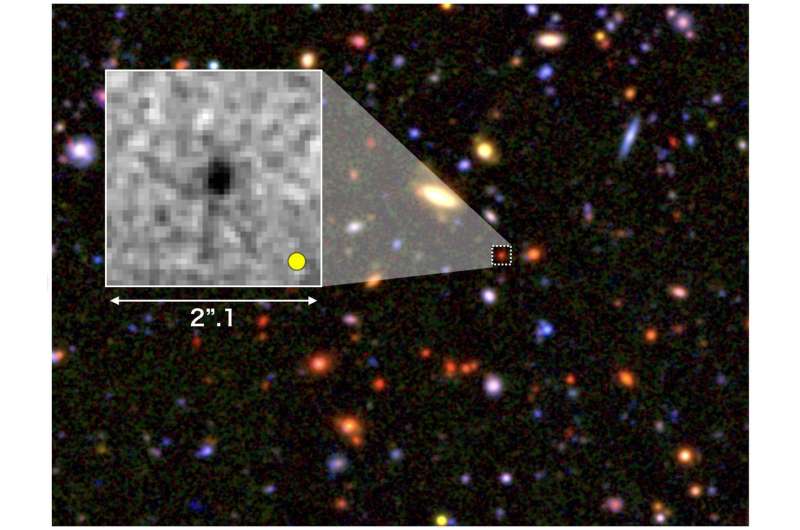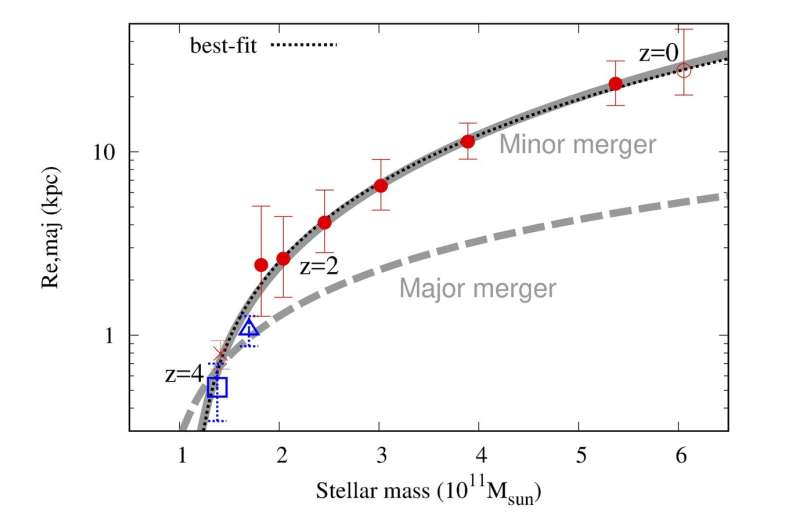Seeds of giant galaxies formed in the early universe

Modern galaxies show a wide diversity, including dwarf galaxies, irregular galaxies, spiral galaxies, and massive elliptical galaxies. This final type, massive elliptical galaxies, provides astronomers with a puzzle. Although they are the most massive galaxies with the most stars, almost all of their stars are old. At some time during the past the progenitors of massive elliptical galaxies must have rapidly formed many stars and then stopped for some reason.
Fortunately, the finite speed of light gives scientists a way to turn back the clock and view the early universe. If a galaxy is located 12 billion light-years away, then light from that galaxy must have traveled for 12 billion years before it reached Earth. This means that the light we observe today must have left the galaxy 12 billion years ago. In other words the light is the image of what the galaxy looked like 12 billion years ago. By observing galaxies at various distances from Earth, astronomers can reconstruct the history of the universe.
An international team including researchers from the National Astronomical Observatory of Japan (NAOJ), the University of Tokyo, and Copenhagen University used data from NAOJ's Subaru Telescope and other telescopes to search for galaxies located 12 billion light-years away. Among this sample they identified massive quiescent galaxies, meaning massive galaxies without active star formation, as the probable progenitors of modern giant elliptical galaxies. It is surprising that mature giant galaxies already existed very early, when the universe was only about ~13% of its current age.

The team then used the Subaru Telescope to perform high resolution follow-up observations in near infrared for the 5 brightest massive quiescent galaxies located 12 billion light-years away.
The results show that although the massive quiescent galaxies are compact (only about 2% the size of the Milky Way) they are almost as heavy as modern galaxies. This means that to become modern giant elliptical galaxies they must puff up about 100 times in size, but only increase in mass by about 5 times. Comparing the observations to toy models, the team showed that this would be possible if the growth was driven, not by major mergers where two similar galaxies merge to form a larger one, but by minor mergers where a large galaxy cannibalizes smaller ones.
"We are very excited about the implications of our findings," explains corresponding author Mariko Kubo, a post-doctoral researcher at NAOJ. "But we are now at the resolution limit of existing telescopes. The superior spatial resolution of the Thirty Meter Telescope currently under development will allow us to study the morphologies of distant galaxies more precisely. For more distant galaxies beyond 12 billion light-years, we need the next generation James Webb Space Telescope."
More information: Mariko Kubo et al. The Rest-frame Optical Sizes of Massive Galaxies with Suppressed Star Formation at z ∼ 4, The Astrophysical Journal (2018). DOI: 10.3847/1538-4357/aae3e8
Journal information: Astrophysical Journal
Provided by Subaru Telescope





















